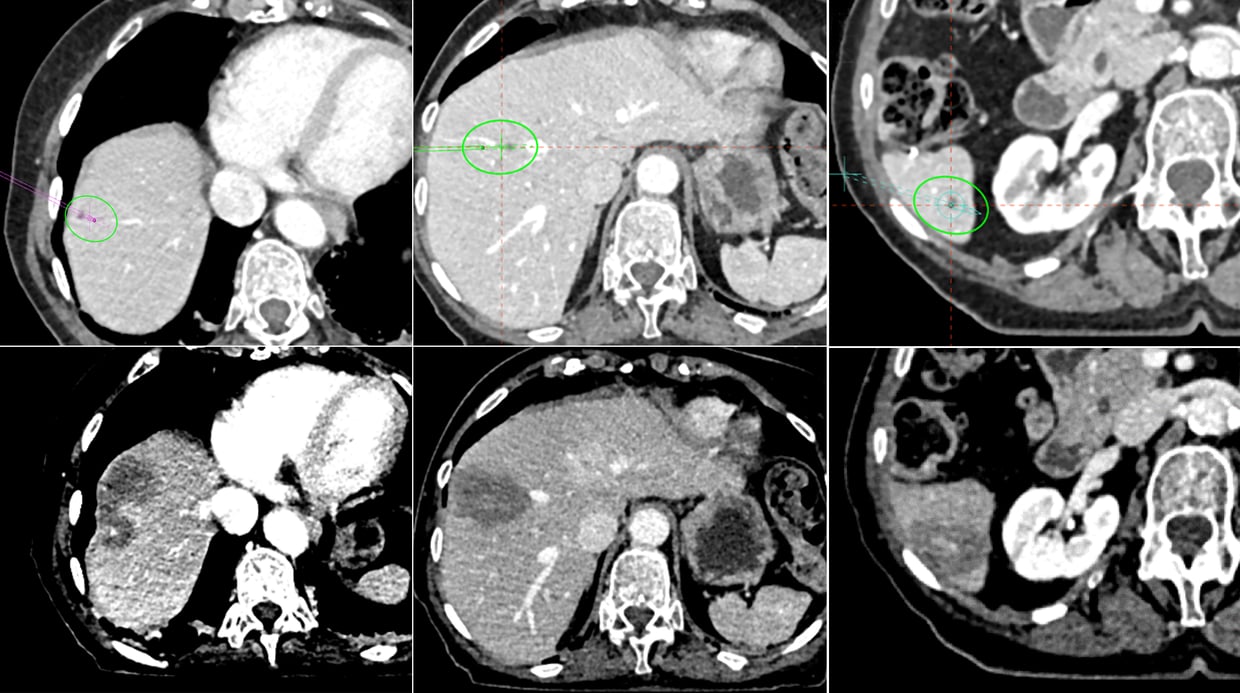IRE of a Lesion close to bile ducts + three Microwave Ablations in one Session
IRE treatment of a tumour in segment III, located near central bile ducts followed by microwave ablations of two lesions and a suspected third metastasis in proximity to the right liver vein in segment VIII. The post ablation scan shows complete ablation on all four lesions. The complete procedure took 98 minutes (153 minutes counting total anaesthesia time) and the patient stayed over night in hospital, before returning home without any early complications.


Name: Dr. Marie Beermann, Dr. Johan Lindeberg & Prof. Dr. Jacob Freedman
Institution: Danderyd Hospital, Stockholm (Sweden)
Patient age and sex: 84 years, female
Initial condition:
- 84 year old woman, who was diagnosted with rectal adenocarcinom in 2019
- Very successful radio/chemotherapy with complete response and thereafter included in a clinical study with watchful waiting
- Six months later she was diagnosed with a gallbladder cancer and had a successful extended resection including segment IVb and V
- After six months a followup CT scan showed three small liver metastasis of up to 10mm in size located in segment III, segment VI and segment VII
Treatment:
- The tumour in segment III was located near central bile ducts. It was biopsied whereafter a 3-electrode IRE was performed with CAS One IR targeting
- Followed by microwave ablation of the other two lesions and a suspected third metastasis in proximity to the right liver vein in segment VIII
- All ablations performed with CAS One IR for targeting
- High-frequency jet ventilation for organ motion control
- An immediate post-operative CT scan with contrast showed complete ablation at all sites
- The purpose of the treatment was curative with this treatment
- The central location of the largest metastasis was a contraindication for thermal ablation
- The other three lesions were treated with microwave ablation, the most effective modality in terms of speed and oncological outcome
- The patient had already undergone two major surgeries within one year without adverse events and could probably have tolerated another one if necessary. But in this case surgical resection was not an option because of the location and number of metastisis.
- There was good evidence that ablative treatment would produce a good oncological outcome compared to resecting the small metastasis, but at a considerably lower cost for the patient in terms of risks and length of stay and rehabilitation
- A biopsy was performed to ascertain the biology of the metastasis as the patient has had two resent primaries, colon and gallbladder. Also future treatment options rely heavily on the type of metastasis. Radiologically and clinically it was deemed most likely to be of colonic origin, which was the reason that all the visible metastasis were treated
Result:
-
The post ablation scan shows complete ablation on all four lesions. The complete procedure took 98 minutes (153 minutes counting total anaesthesia time) and the patient stayed over night in hospital, before returning home without any early complications. An elevated systolic blood pressure was noted in the postoperativ period, which we have found to be common and transient but without any good explanation and difficult to reverse.


